Which brand of Brazilian coffee is good? what's the difference between Brazilian coffee and American coffee?
For professional baristas, please follow the coffee workshop (Wechat official account cafe_style)
Brazil Coffee
When it comes to the origin of coffee, the first thing that comes to mind is Brazil in South America, because it is the largest coffee producer in the world. There is a wide variety of Brazilian coffee, the vast majority of which are unwashed and sun-dried, classified according to the name of the state of origin and the port of transport. Brazil has 21 states and 17 states produce coffee, but four of them produce the largest, accounting for 98% of the country's total output.
The taste of Brazilian coffee has a low sour taste, with the sweet and bitter taste of coffee, the entrance is very smooth, but also with a hint of grass aroma, slightly bitter in the fragrance, smooth and smooth, with a pleasant aftertaste.
They are classified according to the state of origin and the port of transport. Brazil has 21 states and 17 states produce coffee, but seven of them produce the most, accounting for 98% of the country's total output.
The topography of Brazil is mainly divided into two parts, one is the Brazilian plateau above 500 meters above sea level, distributed in the central and southern parts of Brazil, and the other is the plain below 200 meters above sea level, mainly in the north and west of the Amazon River basin.
State of Sao Paulo (Mogiana, Centro-Oeste)
State of Parana (Norte Pionerio do Paran á)
Bahia State (Planaltoda Bahia, Cerrado da Bahia, Atlantico Baiano)
Espiritu Santo (Montanhas do Esp í rito Santo, Conilon Capixaba)
Minas Gerais State (Sul de Minas, Cerrado Mineiro, Chapada de Minas, Matas de Minas)
Londonia (Rond?nia)
Rio de Janeiro State (Rio de Janeiro)
Sao Paulo, Sao Paulo State
Morgiana / Mogiana
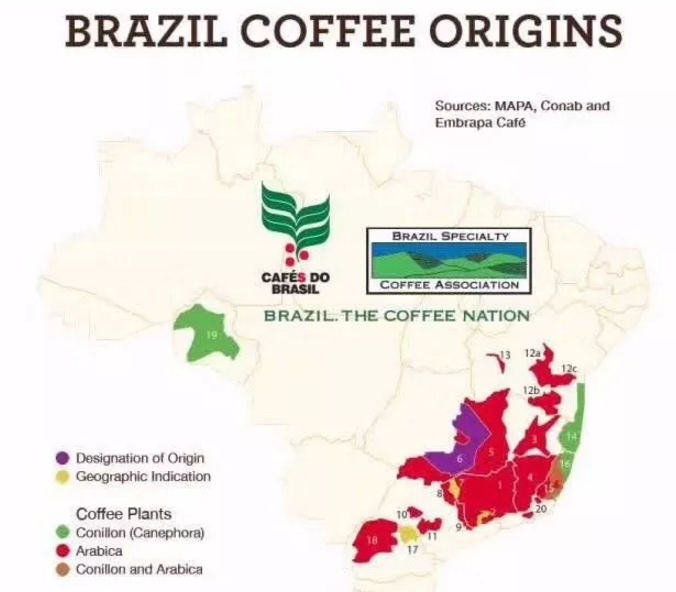
This area is very close to Minas South. Coffee is grown among shrubs, grass and other vegetation. There are many farming families in this area, some of which operate as traditional large-scale farms, while others operate on a small, modern scale. Modern technology blends mountain coffee culture to produce the highest quality green coffee beans.
Centro-Oeste /Midwest
(Gar? a,Marilia and Piraju)
Coffee growing in this area is generally done on large estates combined with traditional production lines. Although it appears that yields are decreasing, there is a growing quest to produce higher quality green beans.
About Santos, Brazil
Santos has a mellow, neutral taste and can be drunk as a single serving. It is also a good choice to blend with other coffee beans. Santos has no outstanding advantages, but there are no obvious defects, mild and smooth taste, low acidity, moderate alcohol, light sweetness, these soft flavors mixed together, to distinguish them one by one, is the best test of taste buds, which is why many Santos fans love this coffee.
Santos coffee grows in Sao Paulo area, named after Santos, an Arabica tree descended from Bourbon Island in the 18th century, belonging to Bourbon subspecies (var. Bourbon)。Before the age of three to four years, Bourbon coffee trees produce small, twisted beans called Bourbon Santos, which are the more advanced Brazilian beans, usually called Brazil directly in the cafe. After the age of three or four years, Bourbon coffee trees only produce large, flat beans called Flat Bean Santos, which taste bland and are cheap.
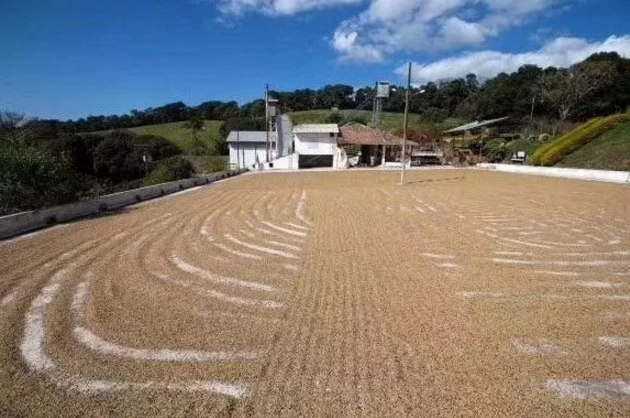
Parana State Parana
Norte Pionerio do Paran á
The state, which used to be Brazil's largest production region, now has its own unique production technology.
After discovering a decline in the unit yield of coffee woodland, producers in Parana created a new "closed planting system". At present, a large number of coffee trees, seedlings per hectare can better withstand the cold wind, but also ensure a more regular yield.
Bahia, Bahia State
Bahia State / Atlantico Baiano
Robusta beans are mainly produced on large farms.
Shapada / Planaltoda Bahia
The area is located in the central state of Bahia and mainly produces hand-screened Arabica coffee. It mainly adopts the method of washing.
Bahia Hilado / Cerrado da Bahia
This area, located in the western state of Bahia, is generally considered to be the latest coffee-growing area in Brazil. Modern technologies for irrigation and harvesting are widely used in this area.
Espirito Santo, Esp í rito Santo
Montanhas do ESP í rito Santo
Conilon Capixaba
The state is mainly divided into two regions: robusta beans are grown on both large and small estates in the north, while typical mountain-grown coffee is grown in the south, which is less common. There are both washing and sun exposure in this area.
Minas Gerais Minas Gerais
South Minas / Sul de Minas
The small manor area produces about 8-10 million bags of coffee beans growing on the mountain. Suitable altitude, undulating terrain and climate conducive to growing coffee, rainfall is concentrated in the months when the fruit needs to grow, and the climate is dry in the months when the harvest is needed.
Syrador / Cerrado Mineiro
Growing coffee in Hirado (also known as Savannah) is a victory for Brazilian coffee technology. More and more large coffee plantations in Syracuse use high technology for production, and this is the case in very few areas. Plateau climate, four distinct seasons, fruit ripening is very stable, in the harvest season is not at all. Savannah coffee is generally treated in the sun, which is also a trend in current processing.
Minas Shapada / Chapada de Minas
In the northern part of Minas Gerais, the area is very small, but the quality of raw beans is among the best in the world.
Mount Minas Gerais / Matas de Minas
It is a very large area with a very diverse ecosystem and is the oldest coffee growing area in Brazil, and its highest altitude is the best area for coffee processing.
Rond?nia, Londonia
This area mainly produces robusta coffee.
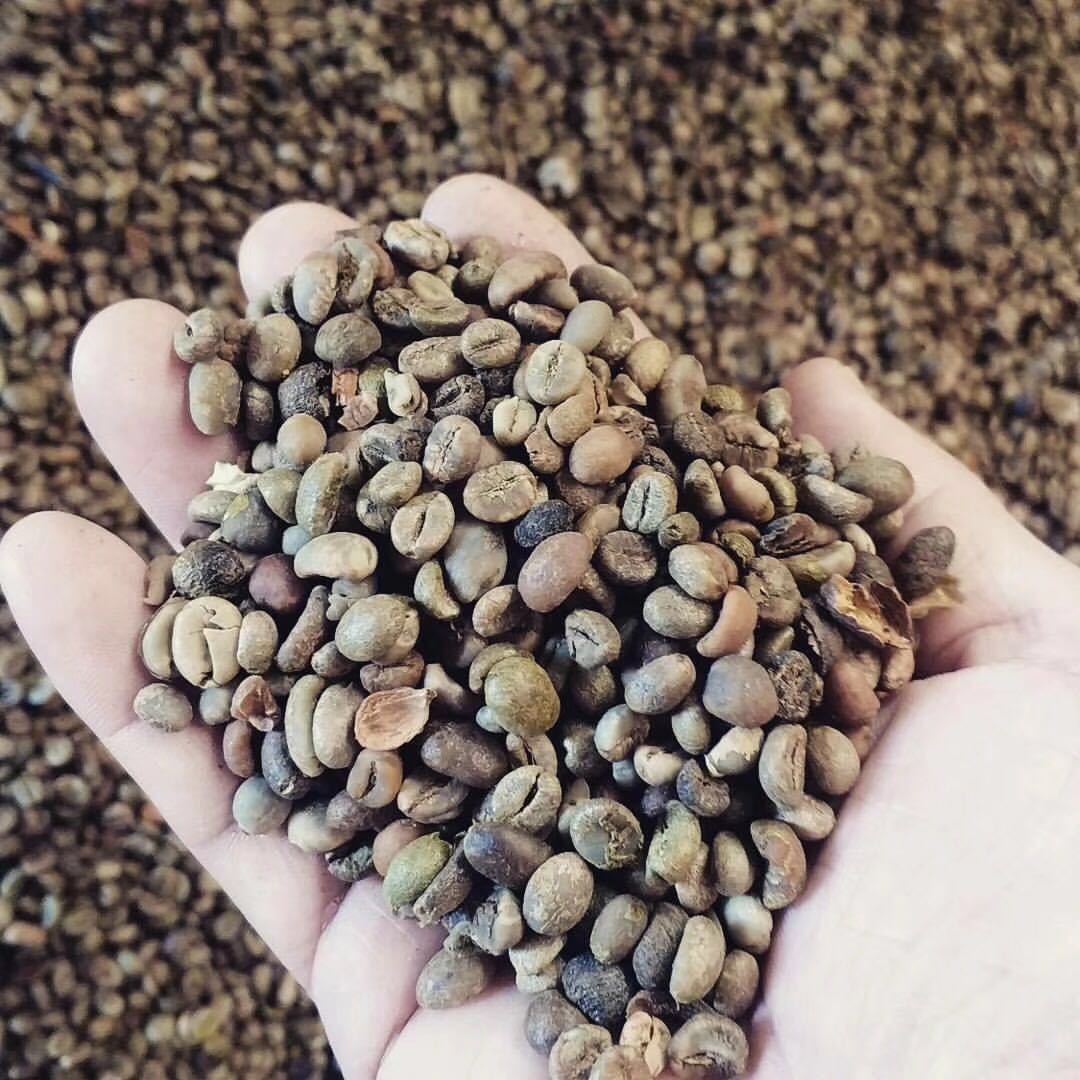
Rio de Janeiro, State of Rio de Janeiro
Mainly grow Arabica species. Compared with other producing areas, it has excellent port traffic advantages.
Hierarchical reference:
There are many kinds of coffee in Brazil, which are mainly treated by solarization, which are classified according to the name of the state of origin and the port of transport.
Due to the scattered origin and uneven quality, the classification standards are not unified:
NO.2~NO.8 according to the amount of sundries
There is NO.13~NO.19 depending on the size of the beans.
About the Brazilian Fine Coffee Association
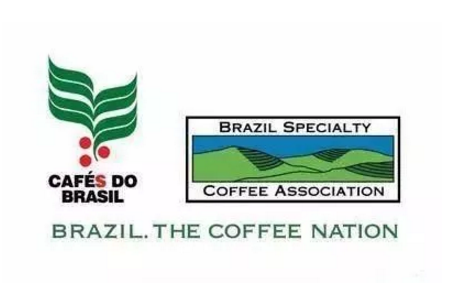
The Brazilian Fine Coffee Association (BSCA), located in Varginha, South Minas, is a non-profit coffee organization founded by 12 Brazilian coffee producers in 1991.
BSCA aims to improve the quality of coffee production in Brazil, to promote the commercialization and industrialization of Brazilian coffee, and to develop ecological agriculture through cooperation between domestic and international organizations to help the sustainable development of coffee growing areas.
references
Brazilian Fine Coffee Industry Association
Wikipedia
Brazilian pectin sun-dried coffee beans
When it comes to solarization, the most widely used is Brazil; the disadvantage of solarization is that it is easy to mix defective beans, and the appearance between beans and beans is poor.
Dry treatment (secado), also known as natural all-day exposure (natural).
Sun drying is one of the ways to treat coffee fruits, which is treated by drying coffee cherries on the sun field for 3-4 weeks after harvest, turning evenly several times a day, so that coffee cherries are evenly heated, and the core and skin of coffee fruit will be separated after dryness. Then remove the pulp and peel with a sheller. And so on, the screening is completed.
There are two methods of fermentation, namely wet hair alcohol and dry hair alcohol, as the name implies, the former adds water, the latter does not add water. In the process of producing alcohol, the seeds and internal pulp will have special changes, which is one of the steps that most affect the flavor of coffee after washing, at this time, the coffee beans are still wrapped in the pericarp, the moisture content is up to 50%, and must be dried. Reduce the moisture content to 12%, otherwise they will continue to be mellow, moldy and rotten. The better treatment is to use sunlight to dry, although it will take 1-3 weeks, but the flavor is very good and very popular. In addition, machine drying is used in some places, which greatly shortens the processing time and makes the flavor inferior to that of sun-dried coffee.
Brazilian coffee fields are endless and are mostly harvested mechanically in order to meet the economic benefits. When 75% of the coffee fruit in the coffee garden turns red, mechanical harvesting is started, followed by the same pre-washing operation, which is moved into the sink to remove floating beans, sift out the sunken beans, and then use a large pulp screening machine to dig out the pulp and remove the pods covered with pectin. The next stage is separate from the washing method: the sticky pods do not need to be moved into the tank to ferment, but to the outdoor bean drying farm. Because of the dry climate in Brazil, the sticky pectin on the pods will harden in about a day or so.
Then use a large number of manpower to turn up and down, so that the pods dry evenly inside and outside, so as not to return to moisture and stink. For about two to three days, with the help of the natural forces of sunlight and dry climate, the pods can achieve a certain degree of dehydration. Then further dry with a dryer, the water content is reduced to 10.5%, and the pods are stored in a special container for about 10 days to further mature, in order to stabilize the quality, remove sheep skins (pods) before export, remove coffee beans, and pack them in stages. The adhesion of the mucous membrane is very strong and is not easy to remove. It must be placed in the slot for about 18-36 hours to make it alcohol and decompose the mucous membrane.
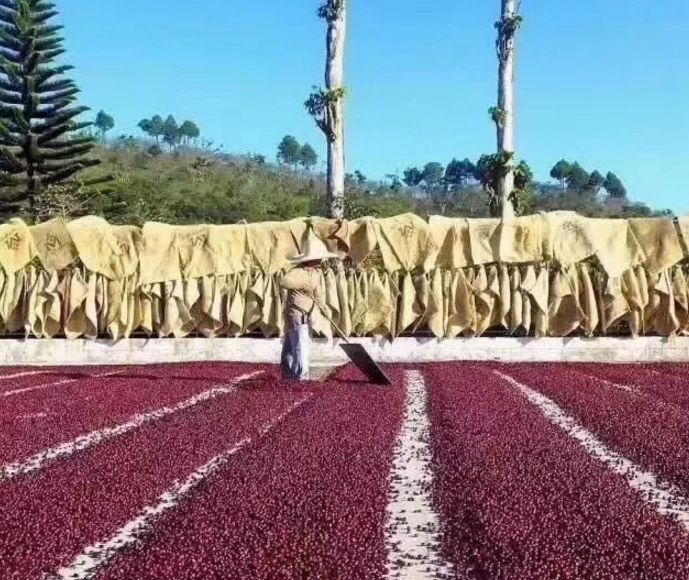
After the coffee fruit is actually picked, it is dried directly in the sun. According to the weather conditions, it is generally necessary to dry the coffee beans for 2 weeks to reduce the water content of the coffee beans to 10%, 12%, and then use a machine to remove the dried peel and pulp. Raw bean processing plants (beneficio) usually retain the parchment shell (parchment; pergamino) on the outside of coffee beans when they are stored and are not removed until they are exported (Costa Rican law stipulates that raw coffee beans cannot be exported with parchment shells). This kind of treatment generally requires sufficient sunshine in the place of origin.
When it comes to the origin of coffee, the first thing that comes to mind is Brazil in South America, because it is the largest coffee producer in the world. There is a wide variety of Brazilian coffee, the vast majority of which are unwashed and sun-dried, classified according to the name of the state of origin and the port of transport. Brazil has 21 states and 17 states produce coffee, but four of them produce the largest, accounting for 98% of the country's total output.
The taste of Brazilian coffee has a low sour taste, with the sweet and bitter taste of coffee, the entrance is very smooth, but also with a hint of grass aroma, slightly bitter in the fragrance, smooth and smooth, with a pleasant aftertaste.
The difference between Brazilian and American style
Espresso Espresso:
With high temperature and high pressure hot water, quickly force out the taste of coffee, become an espresso. According to Starbucks's nutrition form, a cup of single shot espresso is only 5 calories, and caffeine has 75mg, which is very "strong" because it doesn't add any milk.
American Coffee Americano:
Americano is an Espresso that adds a lot of hot water to make it lighter and easier to enter. A cup of single shot American coffee is also only 5 calories, caffeine has 75mg.
Mocha Mocha:
Mocha is an Espresso with chocolate syrup, milk and cream (cream). A small cup of mocha with single shot and whole milk has 160 calories and caffeine has 90mg. You can think of it as a latte with chocolate syrup and cream.
White Coffee Flat White:
In the case of a 30ml Ristretto, a cup of white coffee will have four times as much steamed milk, and there will be a layer of silkier and less bubbly milk on the surface. A cup of single shot, a small cup of white coffee made with whole milk has 110 calories and caffeine has 130mg, which is suitable for people who don't like milk or milk foam but prefer espresso.
Latte Latte:
In the case of a 30ml Espresso, a latte will have 3-9 times the amount of steamed milk, and there will be a layer of softer and more foam on the surface. A single shot, thin latte made with whole milk has 110 calories, caffeine has 75mg, and milk tastes heavier and less caffeinated than white coffee.
Cappuccino Cappuccino:
In the case of a 30ml Espresso, a cappuccino will have twice as much steamed milk as coffee, with a layer on the surface. The thick, thick foam of the cup. Because there are more milk bubbles than Latte and white coffee, it tastes more Creamy. A single shot, a small latte made with whole milk has 90 calories and caffeine has 75mg.
Well, speaking of which, there doesn't seem to be any "cold" posture, so let's get to the point.
Do you know how many kinds of American coffee there are? What's the difference between Americano and Long Black?
American coffee is easy to say, but hard to say! It's just espresso with water, iced American coffee with ice water, hot American heated water.
however! There are two ways to subdivide it: add water first or add water later.
The two different production methods are:
Americano and Long Black
One is to add water first and then Espresso--Americano.
One is to add Espresso first and then water-Long Black
They all have the same coffee-to-water ratio, so is there any difference in flavor? Yes, there are different reasons why the two methods have different degrees of retention of grease (crema) on the surface of Espresso.
Americano: the aroma is weak and not obvious, the bitter taste is heavy, and the flavor change is not obvious after cooling.
Long Black: the aroma is strong and rich, the bitter taste is weak, and the flavor is light after cooling.
Is Flat White really just a cappuccino with thin foam or a latte with less milk?
Allusion: Flat White literally translated as plain white coffee, also known as "fresh milk espresso", Chinese Starbucks named "fragrant white coffee", derived from fancy coffee from New Zealand and Australia. It is said that during World War II, Italians emigrated to New Zealand and Australia and brought coffee culture to the region, which gave rise to Flat White coffee in the 1980s. To this day, the people of the two countries are still debating who is the birthplace of Flat White.
Features: the proportion of coffee and milk in Flat White is similar to that of Cappuccino, but the fineness of the upper layer is similar to that of latte and less foam, and the taste is between latte and cappuccino, but after it is spread to different countries, the practice is slightly different.
I wonder if you have noticed that in the above introduction to several types of fancy coffee, only the word Ristretto appears in Flat White, so what's the difference between Ristretto and Espresso?
Italian translator:
[ristretto]: adjective, the original meaning is narrow, the extended meaning is thick and condensed. Stretto is an adjective with a tight, narrow meaning; ri is a prefix for repetition. Together, it's twice as tight, so it's more concentrated.
[espresso]: adjective, the original meaning is fast; the root has the meaning of pressing and pressing.
[lungo]: adjective, meaning long, extended means light, thin.
Taobao link: https://item.taobao.com/item.htm?spm=a1z10.5-c.w4002-15673140460.31.72521f08PqQm4A&id=40061745543
Important Notice :
前街咖啡 FrontStreet Coffee has moved to new addredd:
FrontStreet Coffee Address: 315,Donghua East Road,GuangZhou
Tel:020 38364473
- Prev

Can Brazilian coffee lose weight? How is the Brazilian slimming coffee working?
Communication of professional baristas Please follow the coffee workshop (Wechat official account cafe_style) Brazil Coffee mentions the origin of coffee, the first thing that comes to mind is Brazil in South America, because it is the largest coffee producer in the world. There is a wide variety of Brazilian coffee, the vast majority of which are unwashed and sun-dried, classified according to the name of the state of origin and the port of transport. Brazil has 2.
- Next
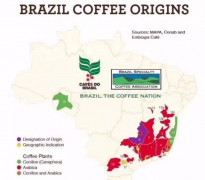
Brazilian Sanders Coffee and American Coffee, Brazilian Arabica Coffee and Robusta Coffee
Communication of professional baristas Please follow the coffee workshop (Wechat official account cafe_style) Brazil Coffee mentions the origin of coffee, the first thing that comes to mind is Brazil in South America, because it is the largest coffee producer in the world. There is a wide variety of Brazilian coffee, the vast majority of which are unwashed and sun-dried, classified according to the name of the state of origin and the port of transport. Brazil has 2.
Related
- Detailed explanation of Jadeite planting Land in Panamanian Jadeite Manor introduction to the grading system of Jadeite competitive bidding, Red bid, Green bid and Rose Summer
- Story of Coffee planting in Brenka region of Costa Rica Stonehenge Manor anaerobic heavy honey treatment of flavor mouth
- What's on the barrel of Blue Mountain Coffee beans?
- Can American coffee also pull flowers? How to use hot American style to pull out a good-looking pattern?
- Can you make a cold extract with coffee beans? What is the right proportion for cold-extracted coffee formula?
- Indonesian PWN Gold Mandrine Coffee Origin Features Flavor How to Chong? Mandolin coffee is American.
- A brief introduction to the flavor characteristics of Brazilian yellow bourbon coffee beans
- What is the effect of different water quality on the flavor of cold-extracted coffee? What kind of water is best for brewing coffee?
- Why do you think of Rose Summer whenever you mention Panamanian coffee?
- Introduction to the characteristics of authentic blue mountain coffee bean producing areas? What is the CIB Coffee Authority in Jamaica?

